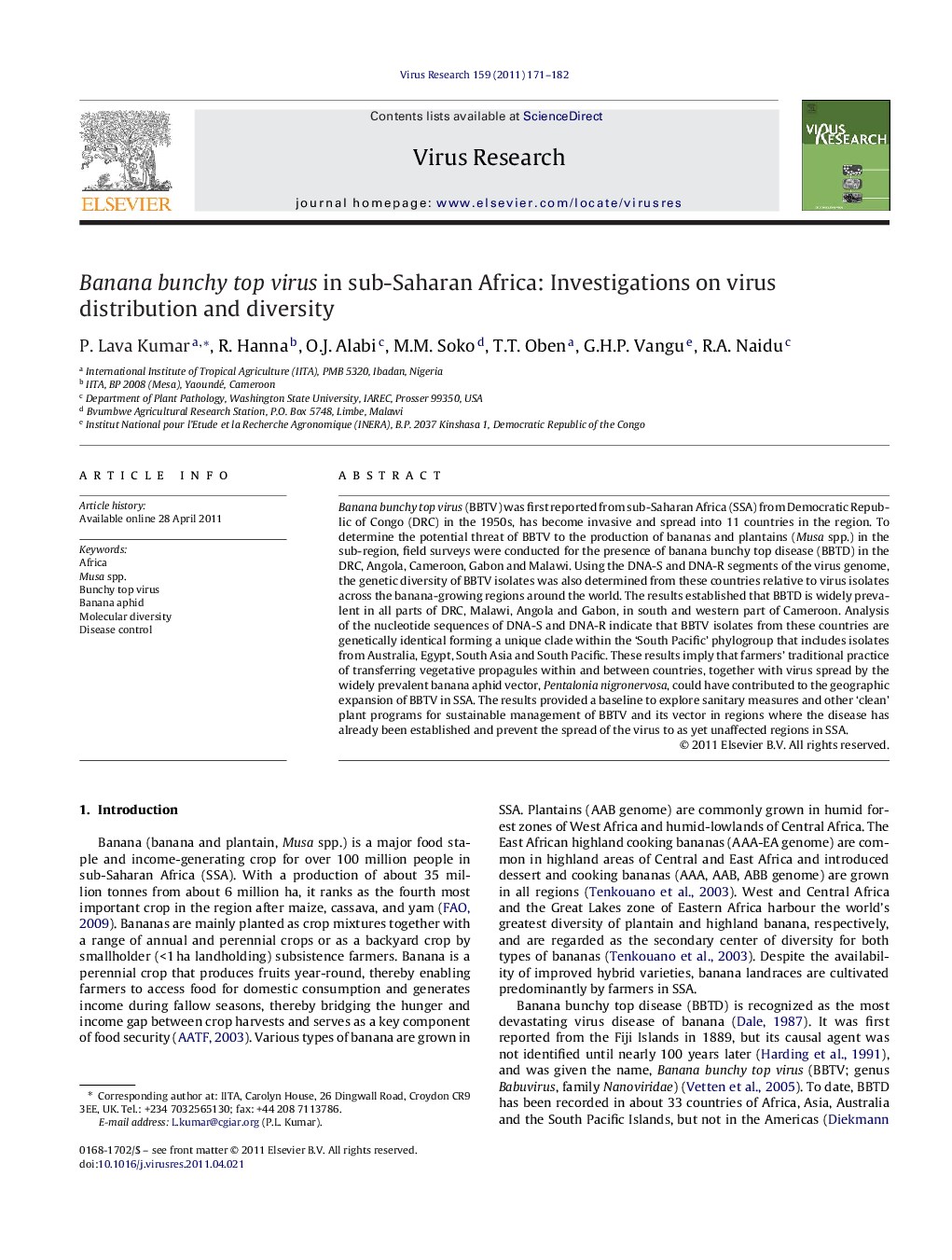| Article ID | Journal | Published Year | Pages | File Type |
|---|---|---|---|---|
| 3429170 | Virus Research | 2011 | 12 Pages |
Banana bunchy top virus (BBTV) was first reported from sub-Saharan Africa (SSA) from Democratic Republic of Congo (DRC) in the 1950s, has become invasive and spread into 11 countries in the region. To determine the potential threat of BBTV to the production of bananas and plantains (Musa spp.) in the sub-region, field surveys were conducted for the presence of banana bunchy top disease (BBTD) in the DRC, Angola, Cameroon, Gabon and Malawi. Using the DNA-S and DNA-R segments of the virus genome, the genetic diversity of BBTV isolates was also determined from these countries relative to virus isolates across the banana-growing regions around the world. The results established that BBTD is widely prevalent in all parts of DRC, Malawi, Angola and Gabon, in south and western part of Cameroon. Analysis of the nucleotide sequences of DNA-S and DNA-R indicate that BBTV isolates from these countries are genetically identical forming a unique clade within the ‘South Pacific’ phylogroup that includes isolates from Australia, Egypt, South Asia and South Pacific. These results imply that farmers’ traditional practice of transferring vegetative propagules within and between countries, together with virus spread by the widely prevalent banana aphid vector, Pentalonia nigronervosa, could have contributed to the geographic expansion of BBTV in SSA. The results provided a baseline to explore sanitary measures and other ‘clean’ plant programs for sustainable management of BBTV and its vector in regions where the disease has already been established and prevent the spread of the virus to as yet unaffected regions in SSA.
► Surveys were conducted to understand the dynamics of Banana bunchy top virus (BBTV) spread in sub-Saharan Africa (SSA). ► BBTV is widespread in DRC, Angola, Gabon, Malawi and localized to few locations in Southwest of Cameroon. ► BBTV isolates in SSA are identical and formed a unique clade within the ‘South Pacific’ phylogroup. ► Uncontrolled movement of infected suckers could be a major factor for widespread of disease. ► Novel tactics appropriate for SSA are necessary to manage BBTD.
